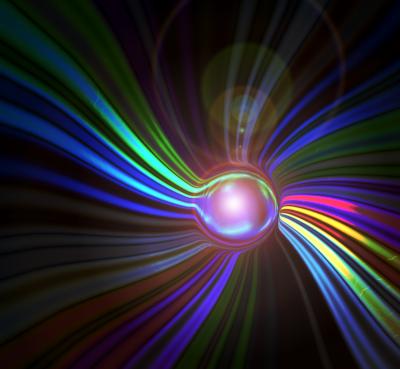‘Super-photon’ could allow for breakthrough in computer-chip performance
November 29, 2010
Physicists from the University of Bonn have developed a completely new source of light: a Bose-Einstein condensate consisting of photons.
This method could be suitable for designing novel light sources resembling lasers that work in the x-ray range. Among other applications, they might allow building more powerful computer chips. The scientists report on their discovery in the journal Nature.
By cooling Rubidium atoms deeply and concentrating a sufficient number of them in a compact space, they suddenly become indistinguishable. They behave like a single huge “super particle” — a Bose-Einstein condensate.
For “light particles,” or photons, this should also work. Unfortunately, this idea faces a fundamental problem. When photons are “cooled down,” they disappear. Until a few months ago, it seemed impossible to cool light while concentrating it at the same time. The Bonn physicists Jan Klärs, Julian Schmitt, Dr. Frank Vewinger, and Professor Dr. Martin Weitz have, however, succeeded in doing this.
When an object is cooled down, it will at some point no longer radiate in the visible range; instead, it will only give off invisible infrared photons. At the same time, its radiation intensity will decrease, so the number of photons becomes smaller as the temperature falls. This is what makes it so difficult to get the quantity of cool photons that is required for Bose-Einstein condensation to occur.
The Bonn researchers succeeded by using two highly reflective mirrors between which they kept bouncing a light beam back and forth. Between the reflective surfaces there were dissolved pigment molecules with which the photons collided periodically. In these collisions, the molecules “swallowed” the photons and then “spit” them out again. “During this process, the photons assumed the temperature of the fluid,” explained Professor Weitz. “They cooled each other off to room temperature this way, and they did it without getting lost in the process.”
A condensate made of light
The Bonn physicists then increased the quantity of photons between the mirrors by exciting the pigment solution using a laser. This allowed them to concentrate the cooled-off light particles so strongly that they condensed into a “super-photon.”
This photonic Bose-Einstein condensate is a completely new source of light that has characteristics resembling lasers. But compared to lasers, they have a decisive advantage: “We are currently not capable of producing lasers that generate very short-wave light, i.e., in the UV or X-ray range,” explained Jan Klärs. “With a photonic Bose-Einstein condensate this should, however, be possible.”
Photolithography breakthrough possible
Chip designers use laser light for etching logic circuits into their semiconductor materials. How fine these structures can be is limited by the wavelength of the light, among other factors. Long-wavelength lasers are less well suited to precision work than short-wavelength ones — it is as if you tried to sign a letter with a paintbrush.
X-ray radiation has a much shorter wavelength than visible light. In principle, X-ray lasers should thus allow for applying much more complex circuits on the same silicon surface. This would allow creating a new generation of high-performance chips, and consequently, more powerful computers. The process could also be useful in other applications such as spectroscopy or photovoltaics.
Adapted from materials provided by University of Bonn
